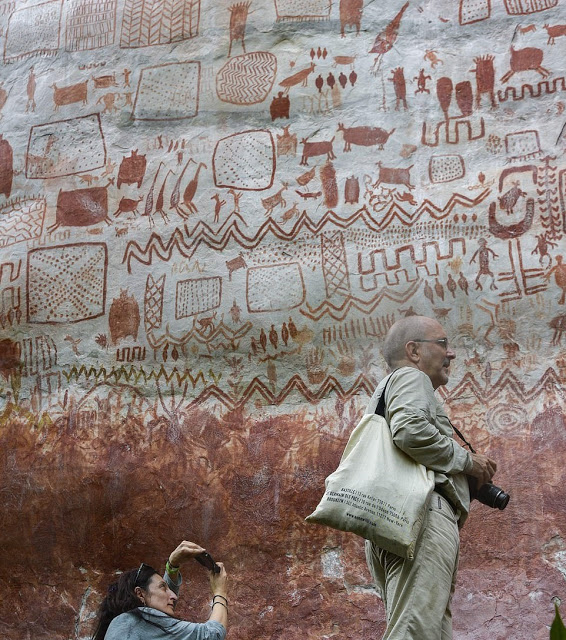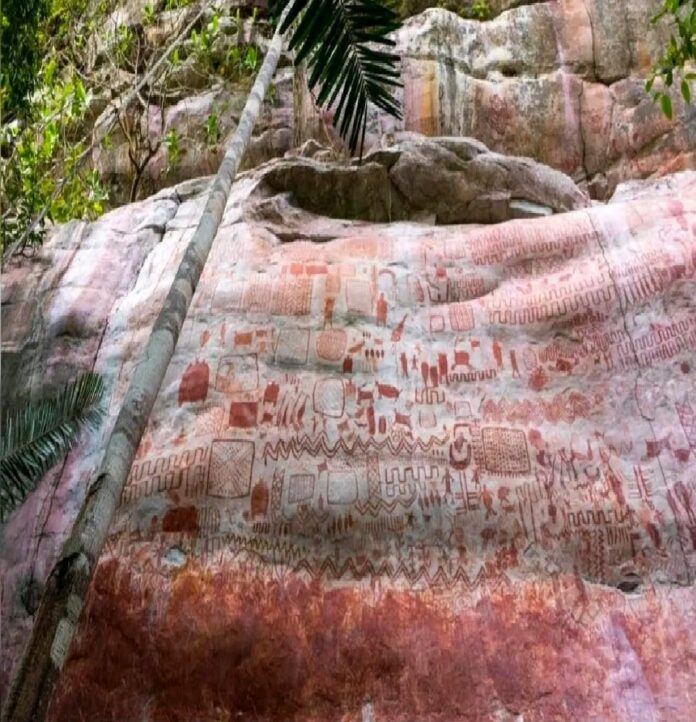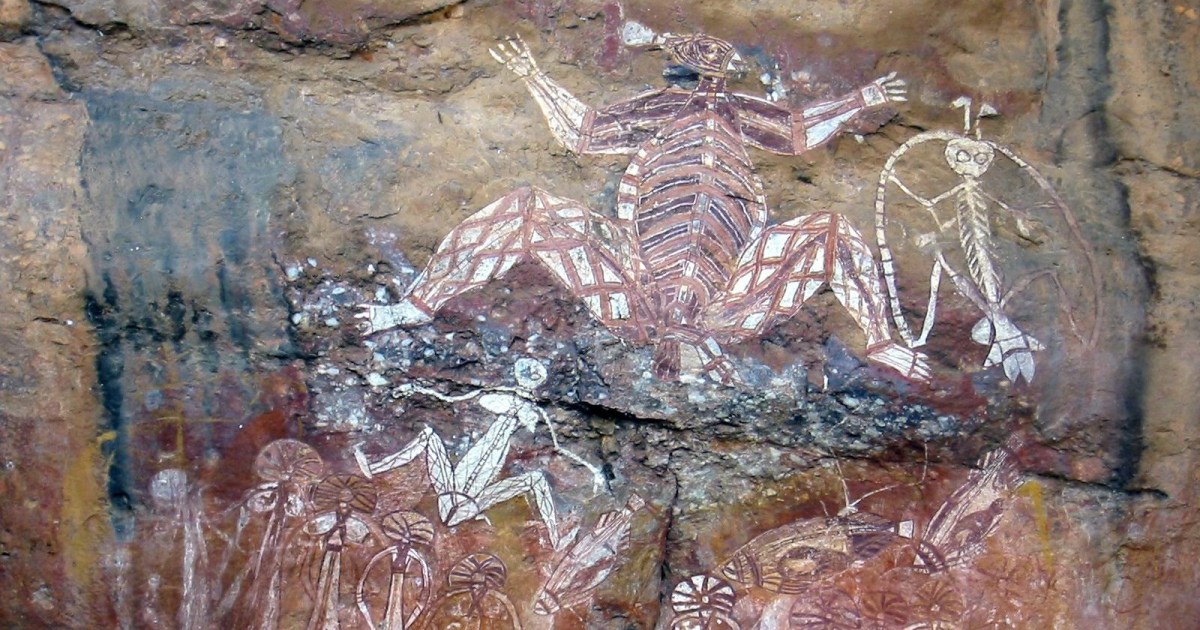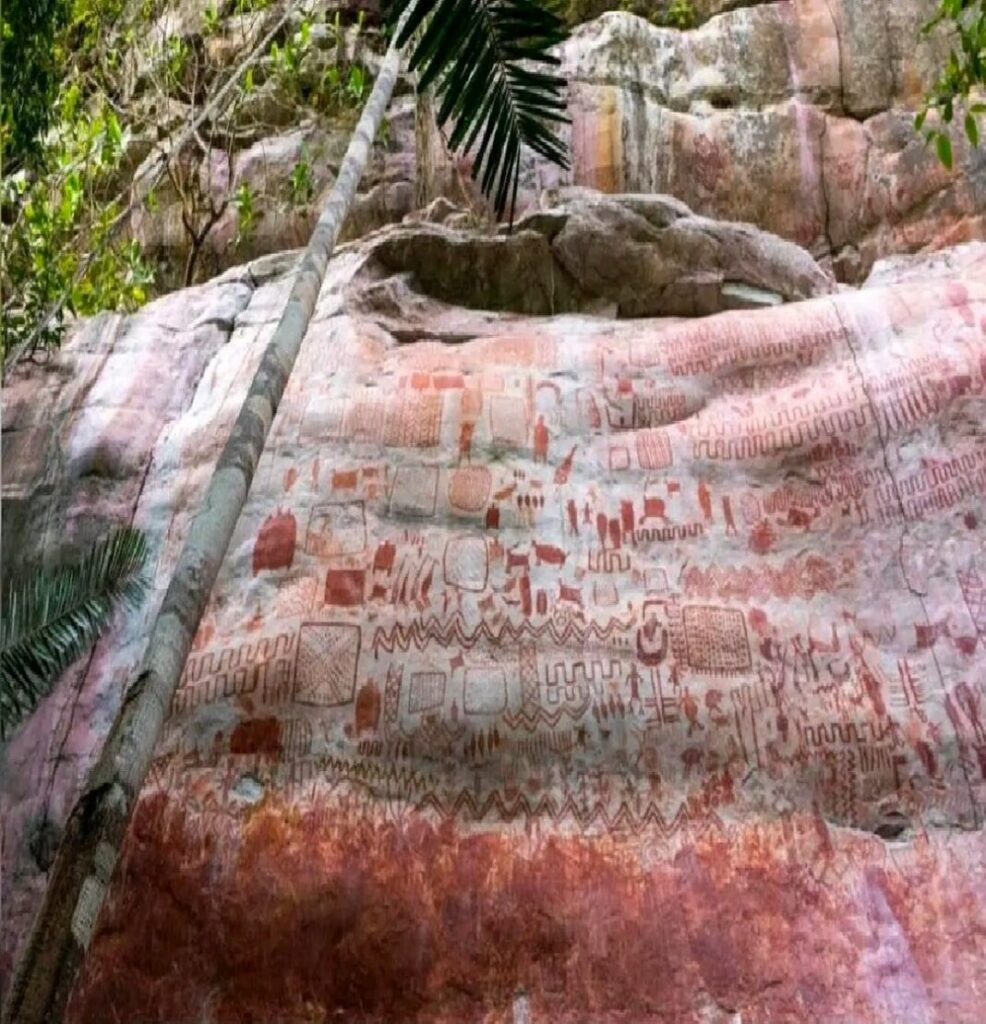In the vast and enigmatic expanse of the Amazon rainforest, a remarkable discovery has emerged that transports us back to a time long forgotten. Researchers have unearthed a sprawling, 8-mile-long “canvas” adorned with captivating ice age drawings, depicting a world filled with now-extinct megafauna that once roamed these lush landscapes. This extraordinary find, located in the Serranía La Lindosa region of the Colombian Amazon, offers a unique window into the lives and artistic expressions of the earliest human inhabitants of western Amazonia.
Painted with the rich, earthy tones of ochre, these ancient rock art masterpieces have stood the test of time, preserving a visual tapestry that sheds light on the intricate relationship between these ancient communities and the natural world they inhabited. Glimpsing the lost wonders of the ice age through these remarkable artworks is a testament to the resilience and creativity of our ancestors, and a call to action to honor the legacy of the past and shape a more sustainable future for the Amazon.
Unveiling the Prehistoric Wonders of the Amazon
The thousands of paintings chronicled within this expansive “canvas” provide a captivating glimpse into the diverse array of species that thrived during the last ice age, approximately 12,600 to 11,800 years ago. From the towering forms of mastodons and giant sloths to the more familiar silhouettes of deer, tapirs, and alligators, these images offer a rare and detailed portrayal of the megafauna that once shared this region with the earliest human inhabitants.

“These really are incredible images, produced by the earliest people to live in western Amazonia,” remarked Mark Robinson, an archaeologist at the University of Exeter and co-researcher of the study. “The paintings give a vivid and exciting glimpse into the lives of these communities, who lived among, and hunted, giant herbivores, some which were the size of a small car.”
The rock art not only documents the varied wildlife of the time but also sheds light on the lifeways of the indigenous hunter-gatherers who called this region home. Excavations within the nearby rock shelters have unearthed a wealth of evidence, including bone and plant remains, that provide insights into the diverse diets of these early Amazonians. From palm and tree fruits to piranhas, alligators, snakes, frogs, and a variety of small mammals, the menu of these ancient people was as diverse as the fauna they depicted in their artwork. The paintings also reveal glimpses of their hunting practices, social interactions, and connections with the savannah creatures that once thrived alongside the emerging tropical rainforest.
The Transformative Impact of Climate Change

The stunning rock art masterpieces not only document the rich biodiversity of the past but also serve as a testament to the profound transformations that the Amazon has undergone over time. As the climate warmed at the end of the last ice age, the once patchwork landscape of savannas, thorny scrub, and forest gradually gave way to the lush, leafy tropical rainforest we recognize today.
“The Amazon was still transforming into the tropical forest we recognize today,” explains Robinson, highlighting the dynamic and ever-evolving nature of this remarkable ecosystem. The disappearance of many of the megafauna species depicted in the rock art, such as mastodons and giant sloths, was likely due to a combination of human hunting and the dramatic environmental changes that swept across the region.
Preserving the Past, Inspiring the Future

The discovery of this extraordinary “canvas” of ice age rock art in the Amazon rainforest is a testament to the resilience and ingenuity of the earliest human inhabitants of the region. These captivating images not only provide a glimpse into a lost world but also serve as a powerful reminder of the deep and enduring connection between humanity and the natural environment.
As we strive to understand the complex relationship between human activities and the delicate balance of ecosystems, this remarkable find offers valuable insights that can inform our approach to conservation and sustainable development in the Amazon. By preserving and studying these ancient masterpieces, we can gain a greater appreciation for the rich cultural and ecological heritage of this remarkable region, and perhaps find inspiration to safeguard its future.
Conclusion: Unlocking the Secrets of the Past, Shaping the Future
The discovery of the sprawling 8-mile-long “canvas” of ice age rock art in the Amazon rainforest is a testament to the enduring resilience and creativity of the earliest human inhabitants of the region. These captivating images not only transport us back in time but also serve as a profound reminder of the deep and abiding connection between humanity and the natural world.
As we continue to unravel the mysteries of the past, we must also strive to protect and preserve the invaluable cultural and ecological heritage that the Amazon rainforest holds. By drawing inspiration from the ingenuity and adaptability of these ancient people, we can work towards a future where the wonders of the natural world and the rich tapestry of human civilization can coexist in harmony. The discovery of this remarkable “canvas” is a call to action, urging us to honor the legacy of the past and shape a more sustainable and equitable future for all.
